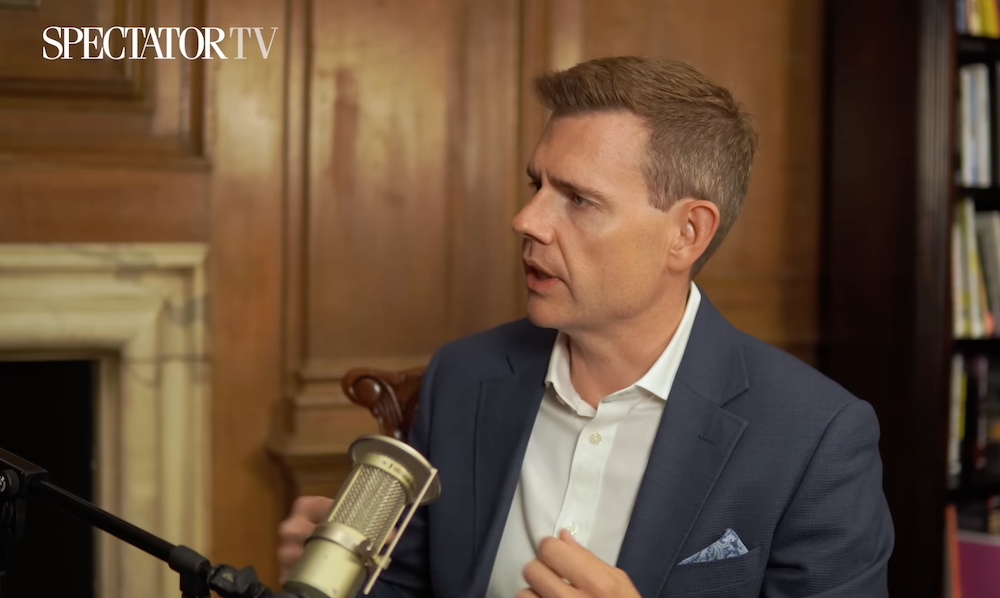Migration, migration, migration. Sir Keir Starmer didn’t express it like that in his Downing Street press conference, but he might as well have done. ‘Significantly’ reducing immigration, which is what he pledged in front of the cameras, can now be added to ‘smashing the gangs’ as clear priorities on which Labour will be judged over the next four years.
The Prime Minister was at pains to say that the focus on cutting immigration was not about ‘politics’, in other words, some kind of knee-jerk political response to events (local election losses) or the popularity of other parties (Reform). But the framing of the policies, the high-profile presentation of them and the drip feed of announcements over the past week signals the government’s desire to grab the narrative from its political rivals. ‘Taking back control’ of our borders is a Labour argument, said Starmer, in a naked attempt to wrest the slogan away from Brexiteers.
Current levels of immigration are unsustainable, socially and economically
Despite its political tint, however, Starmer’s approach has indisputable logic behind it. Current levels of immigration are unsustainable, socially and economically. The main driver has been an influx of foreign workers over two decades (417,000 arrived from non-EU countries in the year to June 2024). So, for there to be any sizeable impact on the numbers, work visa restrictions must be tightened and British employers weaned off their dependence on overseas labour. That, at least, is the theory.
Doing it is another matter. Under Starmer’s plan, employers who recruit heavily from abroad, such as those in engineering and IT, will in future be required to train more people based in the UK and ‘engage’ those who aren’t currently working. Between 2011 and 2022, overall investment in training, per new recruit, dropped by 26 per cent and from 2015 to 2023 apprenticeships for under-19s plunged by 41 per cent.
The pressure on employers to comply with the new regime will be partly financial, as revealed in the small-print of the Home Office white paper setting out the proposals. It says there’ll be a 32 per cent hike in the Immigration Skills Charge, a fee employers pay if hiring overseas workers. For medium and large firms, already clobbered by employer national insurance and minimum wage rises, that’s a hefty increase, going from £1,000 per foreign employee per year to £1,320. Will companies turn to domestic workers instead? Or will they simply put the brakes on recruitment? That’s the danger if the plans don’t include incentives and support to train home-grown workers.
In some sectors, such as adult social care, the government has already faced calls to provide extra funding if its plans are to have any chance of success. The Prime Minister announced care visas would no longer be available, after a record 105,000 were issued in 2023, but the risk is that vacancies will shoot up because UK workers continue to be put off by poor pay and conditions. A promised ‘Fair Work Agreement’ for the care sector is still some way off.
In other areas, there will have to be a fundamental shift towards courses that provide vocational training and skills, and away from some subjects whose content provides no clear pathway to a job. Professor Brian Bell, chair of the Migration Advisory Committee, illustrated the point in an interview on the BBC as he discussed why there was a shortage of welders in Britain. The construction sector wanted to train more of them, he said, but further education colleges weren’t able to provide the (costly) equipment and facilities required for such specialised training, opting for courses for international students instead.
Welders are one of the roles on an official list of ‘shortage’ occupations, for which employers can recruit from abroad at 80 per cent of the minimum salary usually required for a work visa. It’s an extraordinary list, a shocking reminder that something has gone seriously wrong with Britain’s capacity to train its own workforce. Along with other construction roles, such as bricklayers, roofers, tilers and carpenters, are archaeologists, dancers, choreographers, orchestral musicians, arts officers, graphic designers, lab technicians, fishery workers and biological scientists – as well as carers.
The government has a possible solution, also hidden in the white paper. It’s considering imposing a levy, understood to be around 6 per cent, on the tuition income universities receive from international students. It would go towards the system of ‘higher education and skills’ – and could pay for apprenticeships and the work-based training courses so badly needed in those shortage occupations – if the Home Office can win over its colleagues in the Department for Education. They will be anxious about the impact on a sector which receives around 25 per cent of its funding from foreign students; last week, Universities UK issued a timely warning that four in ten institutions would be in deficit by the summer.
The challenge for Starmer is to get that list of shortage occupations down, without harming higher education, bashing business and impeding economic growth. If, by the time of the next election, there’s no need for such a long and permanent list of roles that depend on foreign workers it will be a sign his ambitious plans are working. Government modelling suggests all the proposed changes, including tweaks to a scheme allowing overseas graduates to work, tougher English language requirements and a doubling of the period for settlement to ten years, will reduce the number of visas by almost 100,000 per year. That would certainly be a ‘significant’ reduction – but it will require drive, persistence and imagination to get there.








Comments